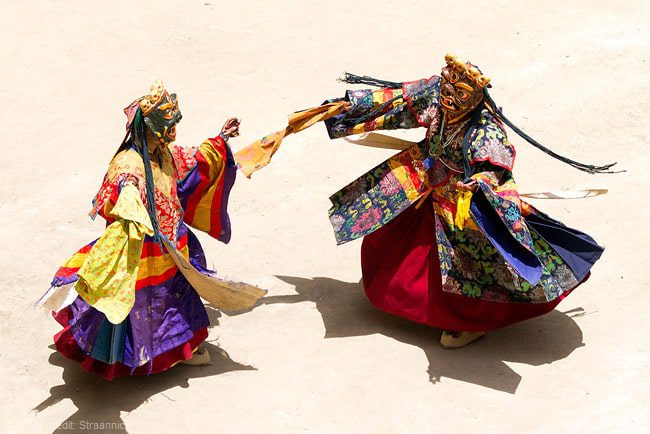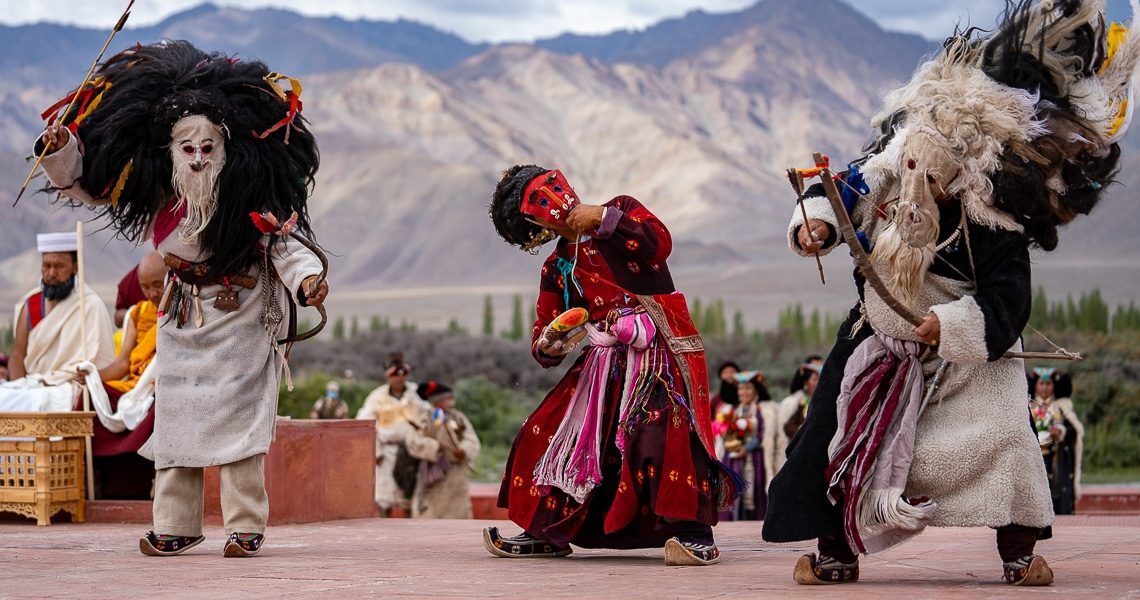Ladakh, a rugged and mystical region nestled in the Himalayas, is known for its ancient stories, unique culture, and breathtaking landscapes. For centuries, the mountains of Ladakh have been revered as sacred spaces, believed to house spirits and deities, and laden with legends that shape the lives of the locals. Trekking through Ladakh’s mountainous terrains isn’t just a physical journey; it’s an immersion into a world where folklore and reality intertwine. Let’s explore the mountain myths and folktales that add a mystical aura to trekking in Ladakh.
Introduction to Ladakh’s Mystical Mountains and Folklore
Why Ladakh is Known for its Mystical Mountains and Folklore
Ladakh has a rich cultural heritage and a landscape that feels otherworldly. The dramatic mountain vistas and ancient Buddhist monasteries lend it a mystical quality. Locals have passed down myths, often recounting stories of spiritual encounters and mountain deities that have a deep connection to Buddhist and Tibetan culture. Trekkers exploring Ladakh today aren’t just navigating natural beauty but are tracing paths filled with folklore that speaks of ancient times and the mysteries that lie within the mountains.
Overview of Ancient Ladakhi Myths and Legends
Many of Ladakh’s legends tell of supernatural beings and spirits that guard its mountains and valleys. Some stories recount ancient nomadic tribes encountering these spirits, while others are linked to the Tibetan influence in the region, blending Buddhist spiritual beliefs with local customs. These legends play a significant role in daily life, with local rituals and customs designed to honor the mountain spirits.

Sacred Mountains in Ladakhi Culture
Cultural Significance of Ladakh’s Sacred Peaks
In Ladakh, mountains are more than just natural landmarks; they are revered as living entities, homes to powerful deities and spirits. Locals often perform rituals before undertaking treks, asking for protection and blessings from these sacred peaks. Certain mountains are believed to have healing powers, while others are thought to be gateways to spiritual realms.
“Trekking through Ladakh’s sacred peaks was unlike anything I’ve ever experienced. I felt a deep sense of respect for the mountains and their stories.”
– Sara T., Germany, Anthropologist
Holy Mountain Spirits and Deities of Ladakh
Among the many mountain deities, some are considered protectors, while others are linked to natural phenomena like storms or earthquakes. Legends speak of mountain spirits who punish those who disrespect the land. This reverence for nature shapes how people approach the mountains, and for trekkers, it means being mindful of the spiritual significance these places hold.
“I was fascinated by the reverence locals have for their mountains. The myths made me see the landscape in a completely new way.”
– Jack L., United States, Environmental Scientist
Folklore-Inspired Trekking Destinations in Ladakh
Mythical Trekking Routes of the Markha Valley
The Markha Valley trek is one of Ladakh’s most well-known trekking routes, offering stunning views and a chance to experience ancient myths. Locals speak of spirits that inhabit the valley, including deities believed to reside within the nearby mountains. This trek is particularly significant for those interested in experiencing Ladakh’s cultural heritage up close, with stops at ancient monasteries where monks recount these mystical tales.
“Markha Valley felt like walking through a storybook. The myths and the scenery created a magical atmosphere.”
– Emma K., Australia, Travel Blogger
Tales of Ghosts and Spirits along the Chadar Trek
The Chadar Trek, a famous winter trek over the frozen Zanskar River, is another route rich in folklore. Locals warn of spirits that emerge during the winter season, and many trekkers have shared stories of eerie experiences on this route. These tales add a layer of intrigue to the Chadar Trek, making it an unforgettable journey for those drawn to the mystical side of Ladakh.
“Walking the frozen river felt surreal, especially with the locals’ stories of spirits appearing at night. It was thrilling and humbling.”
– Liam H., United Kingdom, Adventure Photographer

Popular Myths and Folktales Surrounding Ladakh’s Mountains
Legends of the Indus River and Its Spiritual Role
The Indus River, which flows through Ladakh, is considered sacred. Many believe it to be the abode of powerful water spirits. Ancient Ladakhi tales describe the Indus as a living entity that grants prosperity to the land. Locals perform rituals by the river to honor its spirit, and some trekkers report feeling an inexplicable connection to it as they journey alongside.
Stories of Yeti Sightings in Ladakh
Ladakh, like other Himalayan regions, has its own tales of Yeti sightings. Known locally as the “Abominable Snowman,” the Yeti is said to roam remote areas, protecting the mountains. Trekkers often share stories of mysterious footprints or strange noises in isolated regions, which only adds to the mystique of Ladakh’s high-altitude terrain.
“We saw large footprints during our trek. The locals said it was the Yeti. It added an adventurous thrill to our journey.”
– Rajiv P., India, Wildlife Researcher
Myths of the Local Nomads and Their Mountain Beliefs
The nomadic tribes of Ladakh hold deeply rooted beliefs about the mountains, seeing them as protectors of their herds. Stories speak of guardian spirits who shield the nomads from harm, guiding them safely through rugged mountain passes. This belief adds a spiritual depth to trekking routes that overlap with their migration paths.
“The local herders shared fascinating stories of mountain spirits protecting their animals. It was a rare insight into Ladakhi culture.”
– Sophie M., France, Cultural Historian
Buddhism and the Sacred Geography of Ladakh
How Buddhist Beliefs Shape Ladakh’s Mountain Myths
Buddhism is integral to Ladakh’s culture, influencing its myths and stories. Many mountains are viewed as manifestations of Buddhist deities. Trekkers visiting monasteries along their routes often witness monks performing rituals to honor these deities, merging natural landscapes with spiritual practices.
“The Buddhist influence was profound. Visiting the monasteries made the whole experience spiritual.”
– Ken I., Japan, Spiritual Counselor
Symbolic Representations of Ladakh’s Mountains in Buddhism
In Buddhist tradition, mountains represent a path toward enlightenment. This symbolism encourages trekkers to treat these natural spaces with respect, often stopping to meditate along the way. For Buddhists, the peaks of Ladakh are seen as sacred, and this belief brings a unique reverence to each trek.

Mystical Creatures in Ladakhi Folklore
Mythical Beings Said to Inhabit Ladakh’s Peaks
In Ladakhi folklore, mythical beings are said to inhabit the high altitudes, acting as guardians. Some trekkers have reported feeling an unexplainable presence during their journey. Whether these are true encounters or effects of the altitude, such stories add a sense of adventure and mystery to Ladakh.
Legends of Divine Beasts and Protectors of the Mountains
In some myths, Ladakh’s mountains are protected by divine beasts like snow lions and mythical birds. Local tales suggest these creatures watch over the land, safeguarding it from harm. These legends are common among local herders and trekkers, adding a layer of enchantment to the mountains.
“I heard about the snow lion legend, and I couldn’t shake the feeling that the mountains were alive.”
– David N., Canada, Mountaineer
Impact of Ladakhi Myths on Modern Trekking
Trekking Traditions Shaped by Ladakh’s Myths
Local guides often follow traditional customs on trekking routes, such as offering prayers before beginning a journey. This respect for Ladakhi myths allows trekkers to experience not just the landscape, but the region’s cultural depth.
Influence of Myths on Trekking Etiquette and Conservation
The belief in mountain spirits encourages both locals and trekkers to conserve the environment. Many are careful to leave no trace, honoring the spirits who, according to myth, protect the mountains. This has led to increased respect for the landscape and responsible trekking practices.
How to Experience Ladakh’s Folklore First-Hand
Tips for Trekking the Mythical Routes of Ladakh
To truly immerse yourself in Ladakh’s myths, choose trekking routes that pass through cultural sites and monasteries. Engage with local guides who can share in-depth knowledge of the legends and traditions.
“Our guide was a wealth of knowledge, sharing stories passed down from his family. It made the trek so much more meaningful.”
– Nina R., Brazil, Travel Writer
Visiting Monasteries and Sacred Sites along Trekking Routes
Monasteries in Ladakh are often repositories of ancient scriptures and relics. Visiting these places adds an enriching experience to your trek, allowing you to connect more deeply with Ladakh’s mystical heritage.
The Role of Oral Tradition in Preserving Ladakh’s Legends
How Local Storytelling Keeps Ladakhi Folktales Alive
Oral tradition is crucial in Ladakh, with locals continuing to share stories of mountain myths. These tales often contain valuable cultural insights, offering trekkers a unique lens through which to view Ladakh’s landscape.
The Evolution of Myths and Legends through Trekkers’ Stories
Modern trekkers contribute to Ladakh’s mythological tapestry, with their experiences adding new layers to traditional stories. This exchange keeps Ladakhi folklore alive, blending the past with present-day adventure.

FAQs on Ladakh’s Mountain Myths and Folktales
Q: Why Are Ladakh’s Mountains Considered Sacred?
A: Local beliefs view Ladakh’s mountains as homes to spirits and deities, deeply rooted in Buddhist traditions and ancient mythology.
Q: What Are Some Popular Legends Among Ladakh’s Trekkers?
A: Legends include tales of Yetis, ghost sightings on the Chadar Trek, and stories of spirits residing in the Markha Valley.
Q: Are There Specific Routes Known for Mythological Encounters?
A: Yes, trekking routes like Markha Valley and Chadar Trek are known for stories of spirits, deities, and mystical experiences.
Q: How Do Buddhist Beliefs Influence Ladakh’s Mountain Folklore?
A: Buddhist beliefs shape mountain myths with reverence for nature, often viewing mountains as manifestations of spiritual power.
Q: Can Trekkers Visit Monasteries with Ties to Local Myths?
A: Yes, many monasteries along trekking paths house relics, scriptures, and statues linked to Ladakh’s mountain myths.
Ladakhi Folklore Unveiled: Inspiring Tales and Timeless Wisdom from the High Himalayas








